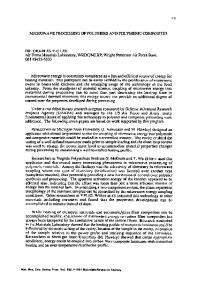Role of solid-state skeletal sintering during processing of Mo-Cu composites
- PDF / 824,330 Bytes
- 9 Pages / 612 x 792 pts (letter) Page_size
- 35 Downloads / 300 Views
I. INTRODUCTION
MO-CU composites combine the refractory properties of Mo with the high conductivity of Cu and can be tailored to specific applications by adjusting the relative amounts of these constituents. Traditional applications, such as electrical contacts, typically require relatively high Cu volume fractions and also have a low degree of shape complexity; consequently, they can be produced by sheet rolling or by die pressing elemental Mo and infiltrating it with Cu.[1–4] Newer applications for Mo-Cu include microelectronic packaging, where a thermal expansion match to silicon is desired along with a high thermal conductivity.[5–13] For these applications, Mo volume fractions of 80 to 85 wt pct are desired. Both infiltration and liquid-phase sintering are potential processing routes for these compositions. Achieving high infiltrated densities for Mo-Cu composites containing 80 to 85 wt pct Cu requires high green densities or densification during sintering of the elemental Mo skeleton. The latter case is mandated for some microelectronic packaging applications in which the shape complexity requirements can only be met by powder injection molding, since the green density in this process is limited by the critical solids loading of the powder. Prior studies of the sintering of elemental Mo identified volume diffusion as the dominant densification mechanism;[14–17] however, concurrent grain growth slows densification.[18] Densification of Mo is greatly enhanced by the addition of transition metals, especially Ni and Pd,[16–19] and by reducing the grain boundary mobility to inhibit grain growth.[20] However, transition JOHN L. JOHNSON, formerly Research Associate, Department of Engineering Science and Mechanics, P/M Lab, The Pennsylvania State University, is Senior Development Engineer, Howmet Castings, an Alcoa Business, Morristown, TN 37814-1402. RANDALL M. GERMAN, Brush Chair Professor in Materials and Director of the Center for Innovative Sintered Products, is with The Pennsylvania State University, University Park, PA 16802-6809. Manuscript submitted February 29, 2000. METALLURGICAL AND MATERIALS TRANSACTIONS A
element additions are detrimental to the thermal conductivity,[2,6,10] so their use is discouraged for electronic packaging applications. Liquid-phase sintering of mixed Mo and Cu powders is an attractive processing route for the compositions of interest in microelectronic packaging, but densification is hindered by the low solubility of Mo in Cu. Liquid-phase sintering of Mo-Cu requires small starting powders, and powder preparation techniques have a large effect on the densification behavior and final microstructure due to the lack of homogenization during sintering.[9,21] These characteristics differ from those of traditional liquid-phase-sintered systems, such as W-Ni-Fe, which have high solubility of the solid in the liquid. Although limited work has been published on liquid-phase sintering of Mo-Cu, more extensive studies have been conducted with the W-Cu system,[6,7,10–13,22–33] which is chemi
Data Loading...











